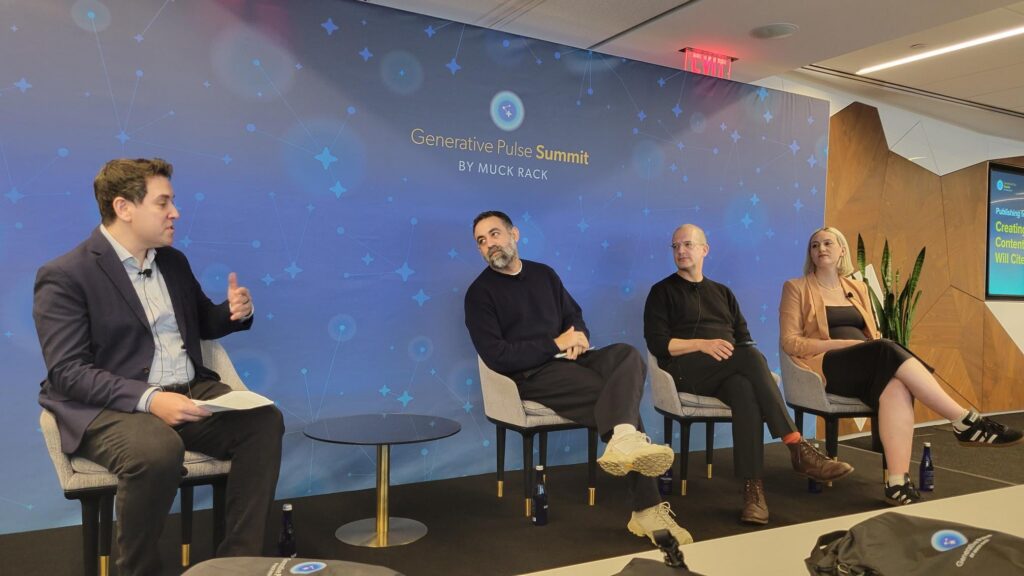The widespread use of mobile phones means pay-per-call lead generation is growing in importance. In its update to AdWords, Google even highlighted the importance of businesses being able to run ads with click-to-call extensions and measure conversions from phone calls they receive. However, with this trend come the topics of lead quality, understanding how to set up pay-per-call campaigns and location-based tactics, among others.
To shed some light on the growing importance of mobile calls for lead generation, we spoke with Jason Spievak, CEO of RingRevenue, a call marketing automation company.
In this interview, Spievak explains the ins and outs of pay-per-call lead generation, the elements of setting up a campaign and the impact mobile is having on the industry.
Please introduce yourself.
Entrepreneur, software guy, parent, sportsman, spontaneous oddsmaker. I’ve been told I’ll bet on anything, but I’d lay odds that’s not true. I’m the co-founder and CEO of RingRevenue, the industry-leading provider of call marketing automation technology solutions; before that, a tech M&A investment banker in Silicon Valley. Married to my college sweetheart. Currently on a lifelong adventure to see every country in the world and see an NFL game with my son in every stadium. Two communications software IPOs. A couple of patents and a fancy degree. Currently cleaning up after a puppy this evening.
How would you describe RingRevenue in one sentence?
RingRevenue builds innovative technology that simplifies call marketing automation and drives more revenue for our customers.
If I could have a couple of sentences, I’d say our patented cloud-based platform makes it easy to seamlessly integrate with the solutions you already use. By delivering complete campaign management, clear attribution and practical analytics in one end-to-end solution, we help businesses grow revenue across all marketing channels. Think of us as Marketo for calls.
Can you walk us through what it would look like for an advertiser to get started with a RingRevenue campaign?
It’s quick and easy to get set up on our platform. We speak with the advertiser to determine the scope of their needs, as well as their marketing objectives. We then provide a login to their platform and walk them through the steps of launching their first campaign. There is no IT needed, and the initial campaign setup only takes a few minutes. There are a few different sections to configure:
– Call treatment: this includes what number the calls should be directed to, and setting up an IVR tree to filter and route calls based on the advertiser’s specific needs
– Campaign parameters: such as hours of operation, geographical regions, etc.
– Campaign payout structures: if the advertiser wishes to pay commissions based on a qualified call
– Creative setup: if the phone numbers are to be used alongside Web campaigns, they can set up landing pages and custom creative (such as banners, videos, etc.) with their unique tracked numbers already embedded
In order to be able to accurately track what keywords, search engines and other referral sources are driving their phone calls, a simple Web integration code needs to be placed directly on the advertiser’s website one time. It’s basically like placing a pixel. We have other integration options based on the advertiser’s needs, such as conversion reporting with their call centers, existing click-tracking solutions, integration with leading third-party tools such as CRM, bid management, ad serving and business intelligence solutions.
What kinds of businesses are most likely to benefit from call marketing automation?
Any business that understands the value of phone calls and is looking for ways to get more high-quality calls is a perfect fit. There are a variety of basic call-tracking offerings on the market, but call tracking is really only a small piece of the puzzle. Quality filtering and routing, detailed analytics and in-depth reporting, and the opportunity to syndicate your offers to a broad spectrum of media distribution partners are the real elements that help a company really grow its business and revenues. If you are a company that closes business over the phone and wants to improve ROI, then you will benefit from call marketing automation.
What are the most common types of advertisers RingRevenue works with? Do they have unique needs that require customization?
Our technology supports a broad spectrum of partners, from performance networks and agencies, to national brands and advertisers. There are specific verticals that we do see the greatest demand from, including insurance, home services, financial services, travel, legal and education. In fact, our top categories are similar to Google’s top search revenue categories.
How would you explain pay-per-call lead generation?
In a nutshell, pay-per-call lead generation means tracking call-based campaigns and only paying for the calls you like. It means that you are paying media partners to drive phone calls to your business (or call center) and you are paying them only for qualified leads that have value. Thanks to in-depth reporting and real-time analytics, you can pinpoint which partners are driving the best quality calls and optimize your spend with them accordingly. You can also set up filtering and call-routing parameters, so that you only get calls from the sources that meet your company’s quality criteria. Once the calls are connected, you then decide at what point the lead is qualified (based on characteristics such as call duration, geographical location, key presses, etc.) and set your payout triggers.
What happens once someone calls a RingRevenue phone number?

When a customer calls a RingRevenue phone number, their call is instantly routed through the RingRevenue system. Based on the call-treatment process that the advertiser has set up, they may be routed to a specific call center agent or location based on a number of variables — the time of day they are calling, their geographical location, whether they are calling from a mobile device, etc. They may also be asked to answer a series of questions to best determine who should answer their call. These steps ensure that the advertiser is able to respond in the most effective manner possible, while also receiving only calls that meet their criteria.
How does RingRevenue determine whether a lead is qualified or not?
It’s not RingRevenue that decides. It’s entirely up to the advertiser, using RingRevenue’s point-and-click tools. When setting up pay-per-call campaigns, the advertiser selects what criteria must be met before a lead is considered qualified and eligible for commission. Advertisers want inbound calls because they convert at a much higher rate than clicks and at a higher average order value. But it costs them money each time they answer the phone, so they only want good calls. This is the magical part of RingRevenue’s technology that lets Fortune 5000 advertisers work with a broad range of performance-based media partners to drive high-quality inbound calls on a pay-for-performance basis.
How has the spread of mobile devices affected pay-per-call campaigns? How has RingRevenue adjusted to the trend?
The growth of mobile has helped drive substantial growth in the pay-per-call market. The explosive growth of mobile search is driving billions more calls each year from consumers to businesses. After all, the most natural action for a mobile user is to place a call rather than click a link and fill out a form. Advertisers are looking for the most effective ways to monetize mobile campaigns and including phone numbers is a crucial element. RingRevenue has helped support this trend by providing the technology to easily set up click-to-call links for mobile campaigns, track, filter and route the calls, and allow advertisers to only pay publishers for the calls they like. Our platform also integrates with existing click-tracking solutions, so that advertisers don’t have to choose between clicks or calls but instead promote using both and see clear ROI across all of their campaigns.
What are the biggest challenges for generating leads via phone calls?
Until now, advertisers who want inbound calls had to choose between quantity and quality. Typically those performance-based media sources that could drive volume also resulted in a high volume of lower-quality calls hitting the advertiser’s call center. The RingRevenue platform was designed to address exactly this challenge. Advertisers using RingRevenue can set the conditions to adjust for their target levels of both the quality of the calls they receive and how many of them they would like to get.
Besides mobile, are there any notable trends in this industry?
Marketers have rushed to online marketing over the past 15 years. But at the same time, the number of phone calls from consumers to advertisers in the U.S. has grown to over 30 billion calls a year, and that number is growing by billions of calls a year due to mobile search. Most big-ticket products and services don’t close with a click. People shop online but they are still purchasing offline — by placing a phone call. Phone calls convert 10-20 times better than clicks, and advertisers still want those calls.
Local targeting is also on the rise. This is closely linked to mobile, but it deserves separate mention. National advertisers are now finding ways to closely target consumers at a local level. A complete call performance marketing solution like RingRevenue enables this, through campaign bundling and location-based call routing.
What tips would you share with those interested in leveraging phone calls for lead generation and other business purposes?
It’s easier than you think to get started with pay-per-call lead generation, whether you’re looking for attribution on your current spend or looking for more inbound leads. Want to know which of your keywords are driving not just clicks but also sales in your call center; or how to take advantage of mobile advertising without losing your shirt? The answer is now literally just clicks away, with more visibility and less risk than there has ever been around mobile advertising.
Is there anything worth discussing that we haven’t mentioned yet?
More than $300 billion is spent on advertising in the U.S. each year, and only 15 percent of that is online. The other quarter trillion is being spent each year not to drive a click but to drive a store visit or a phone call. There are tens of billions of calls each year and that’s growing by billions a year. In fact, more than 4 percent of the U.S. workforce works in a call center. Advertisers don’t maintain those multi-thousand-seat call centers because they want the expense. They have them because that’s how their customers choose to engage with them. Phone calls are a massive market opportunity, and we’re just getting started measuring and optimizing that quarter trillion in annual ad spend. It’s going to be an exciting few years in this industry.
By Jason Hahn




